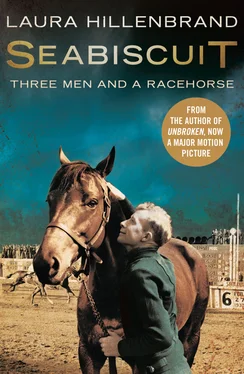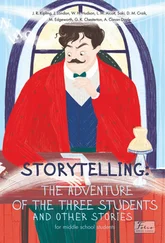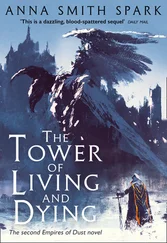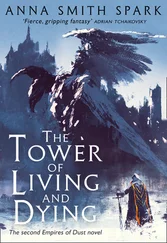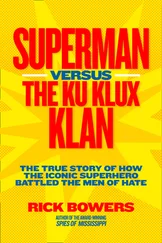1 ...8 9 10 12 13 14 ...25 “Tommy,” he said, “you must have had somebody praying for you.”
Praying was usually the best you could do when confronted with a son of Man o’ War. Hard Tack, also a Man o’ War son, inherited the fabled Hastings temper distilled to crystal purity. The colt spent three years plunging around the track in devil-possessed rages and nurturing a vendetta against the hapless assistant starters assigned to hold his head in the doorless starting gate. He terrorized them without mercy; they feared and loathed him without reserve. Hard Tack became a notorious rogue, inspiring turf writer John Hervey to dub him “the archexponent of recalcitrance.” Fitzsimmons had gentled plenty of miscreants, but he had no answers for Hard Tack. By some miracle, on three occasions, he was able to coax the horse into playing the racing game. Running with an unusual gait in which one foreleg jabbed outas he swung it forward, Hard Tack channeled savagery into velocity, whipping top horses in stakes races—the highest level of racing—and breaking speed records. But these were only skirmishes. Hard Tack won the war. At the starting gate before a race in 1931, he issued his declaration of independence. When the starter banged the bell, Hard Tack rooted his hooves in the ground and stayed right where he was. Fitzsimmons packed him up and shipped him back to owner Phipps.
By the time Hard Tack entered stud in 1932, his name burned in infamy. No one was foolish enough to pay a stud fee to breed a mare to him. Poor Gladys Phipps offered him to Maryland breeders for free, but she couldn’t find a single taker. She then asked Kentucky’s famed Claiborne Farm, which boarded her mares, to stand him at stud. They declined. Eager to see some return on her investment, she had him vanned far down a lonely Kentucky lane, onto a farm called Blue Grass Heights, and parked him in a paddock deep in a grove of mulberry trees. She sent some of her own mares over from Claiborne to be bred to him. One of them was a mealy, melon-kneed horse named Swing On. She, too, had once been in Fitzsimmons’s care, but though she had shown a quick turn of foot occasionally, she hadn’t trained well enough for Fitzsimmons to think she was going to be much of a racehorse. He had retired her without ever racing her. She was nicely bred, so Phipps decided to send her to Hard Tack’s court, along with three other mares. Swing On and her fellow mares came back to Claiborne pregnant. Phipps crossed her fingers, hoping that these matings would re-create the perfect forms of the forebears without the tyrannical disposition.
They didn’t. At New York’s Aqueduct Racecourse late in 1934, Hard Tack’s first two yearlings stepped off a railcar into Fitzsimmons’s care. Swing On’s son Seabiscuit (a synonym for his sire’s name) and the other colt, Grog, could not have looked less like their sire. Noah, the foaling groom at Claiborne, had summed it up about as well as anyone when he pulled Seabiscuit into the world: “ Runty little thing.” Claiborne handlers had been so dismayed with the colt that they had hidden him in a back barn when Phipps came to look over her new crop of horses. A year of maturing hadn’t helped much. “Seabiscuit was so small,” said Fitzsimmons, “that you might mistake him for a lead pony.” Curiously, Hard Tack appeared to be stamping his foals in a mold that was the polar opposite of his own. The only similarity, evident in Seabiscuit, was that swatting foreleg. Not only were these colts strange-looking, shaggy, and awkward, but aside from the slight difference in their mutually diminutive heights—Grog was a hair shorter—they were identical. Without the assistance of a halter nameplate, virtually no one could tell them apart. The colts must have liked the mirror image; they had become inseparable in the Claiborne paddocks.
Fortunately, Hard Tack’s raging temper had also come out in the genetic wash. Seabiscuit floated along in a state of contented, bovine torpor. Sleeping was his favorite pastime. Horses usually sleep in numerous brief sessions scattered throughout the day and night; about 20 percent of their daytime is spent snoozing. Because of the size and configuration of their bodies, they suffer impeded breathing and circulation when recumbent, and as prey animals who have trouble getting to their feet quickly, they are instinctively disinclined to stay down. As a result, the vast majority of horses’ sleeping is done standing, which they can do thanks to ligaments that lock their leg joints in the extended position. The average stabled horse spends just five minutes at a time lying down to sleep, almost always at night.
Seabiscuit was the exception. He could keel over and snooze for hours on end. His inability to straighten his knees all the way may have been the culprit, preventing him from locking his forelegs in the upright position. Fortunately, he suffered no negative consequences. While every other horse at the track raised hed demanding breakfast, he slept long and late, stretching out over the floor of his stall in such deep sedation that the grooms had to use every means in their power just to get him to stand up. He was so quiet that Fitzsimmons’s assistant trainers once forgot all about him and left him in a vanfor an entire afternoon in brutal heat while they went for a beer. They found him there hours later, pitched over on his side, blissfully asleep. No one had ever seen a horse so relaxed. Fitzsimmons would remember him as “a big dog,” the most easygoing horse he ever trained. The only thing Seabiscuit took seriously, aside from his beauty rest, was eating, which he did constantly, with great vigor.
He may have been an amiable little horse, but his career prospects looked dim. He was as slow as growing grass. He barely kept up with his training partners, lagging along behind with happy ineptitude. Worked over and over again, he showed no improvement whatsoever. “The boys who took care of him could do anything with him,” Fitzsimmons said. “Anything, that is, except to get him to run in the mornings.… I thought he simply couldn’t run.”
But in time, something in Seabiscuit’s demeanor—perhaps a conspicuous lack of sweating in the workouts, perhaps a gleam in the horse’s eye that hinted at devious intelligence—made Fitzsimmons question his assumptions. “He was as wise as a little owl,” Fitzsimmons remembered later. “He was almost too quiet, too docile.” Fitzsimmons began to wonder if this horse might be just as obstreperous as his sire, only much more cunning in his methods. His father had raged; Seabiscuit seemed … amused. “He struck me,” Fitzsimmons said, “as a bird that could sing but wouldn’t unless we made him.”
Fitzsimmons made him. “I decided to fool the Biscuit,” he explained, “to prove to him he wasn’t fooling me.” One morning, when working all the yearlings over two furlongs—a quarter of a mile—in sets of two, he paired Seabiscuit with Faust, the fastest yearling in the barn and a future major stakes winner. He told Seabiscuit’s exercise rider to find a stick to use as a whip. This was a radical departure from Fitzsimmons’s regular training practices, which mandated that exercise riders never use whips on their horses. The trainer believed that racehorses were instinctively hard-trying, competitive creatures who did not need to be forced to exert themselves. During one race in his jockey days, he heard another rider cursing after dropping his whip on what he thought was an otherwise sure winner. Fitzsimmons handed the jockey his whip, then rode his own horse right past him to win, urging him with nothing but hands and voice. But Seabiscuit could not be coaxed into showing any speed at all, and to find out if the horse was hoodwinking him, Fitzsimmons opted to make an exception to his no-whip rule. To ensure that the stick would not hurt Seabiscuit, Fitzsimmons had the rider select one that was flat, so it would merely slap his flank.
Читать дальше
